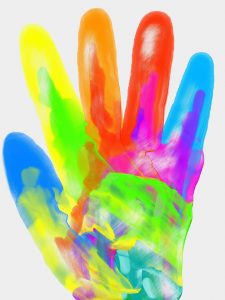
Fingerplay is using your hands while saying nursery rhymes, songs, or poems. Fingerplay helps children learn how to use their cognitive skills. The children can learn how to gain control over their muscles, and learn their vocabulary. The average child has fine motor skills and they are developed through fingerplay. Below are some of the songs and nursery rhymes that help children develop their cognitive skills.
Where Is Thumbkin? this is a nursery rhyme that uses one finger at a time as the child learns to wiggle his finger. The child hides his hands behind his back using both arms and hands. The children learn left from right in this song. Children also learn the names of their fingers.
Whoops Johnny is a rhyme where the children learn how to count their fingers on each hand. Children will learn fine motor skills by clapping their hands and touching their fingers throughout this song.
Here is the Church uses both right and left hands, and fingers. They may know the word church, but not steeple, so by using their hands they see the shape of a steeple and they will know the next time they pass by a church what a steeple looks like. Finger play is a great way for children to learn vocabulary words.
Finger play helps children link vocabulary to the words they hear through out the day. Finger play and rhymes help the children be more active in telling the story. Action rhymes are short, like Row Row Row Your Boat, and you usually use your entire body. Rhyme content is a good way for the toddler to learn because of the repetition. Songs like Hokey Pokey, Humpty Dumpty and The Wheels on the Bus are also great finger play songs.
Finger play is a fun way for the children to learn how to memorize words and be aware of their body, and get their exercise in. Finger play should not only be taught in school, but also at home with the parents.